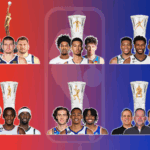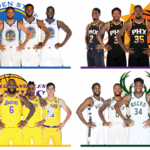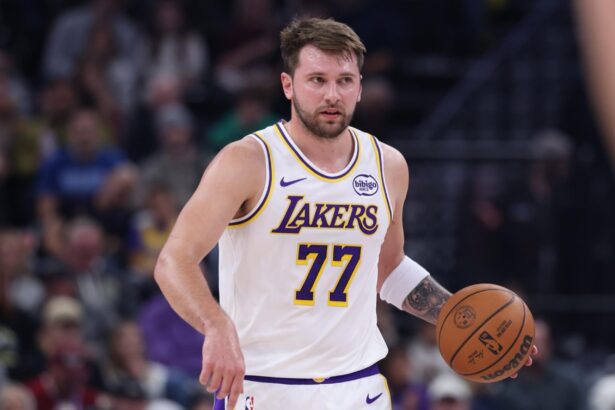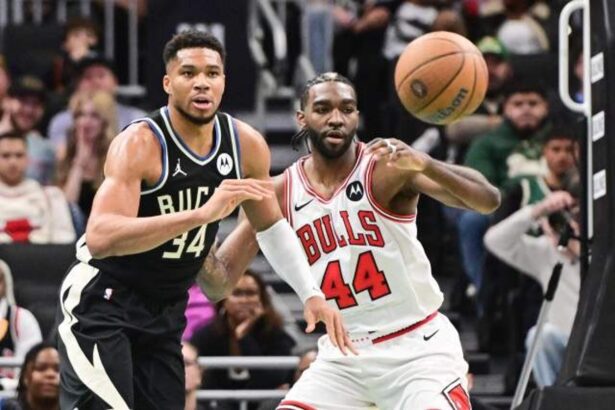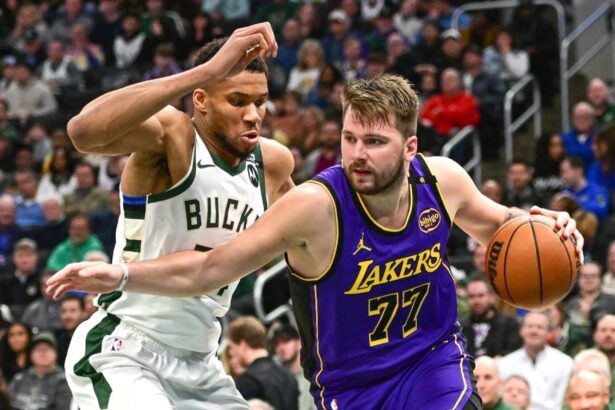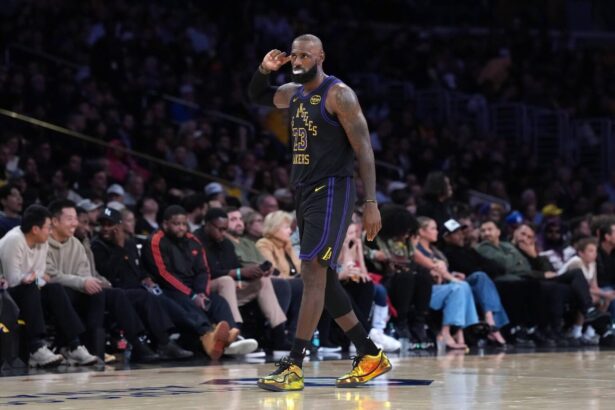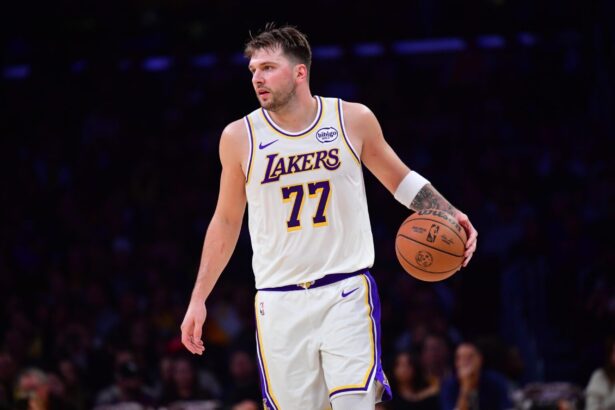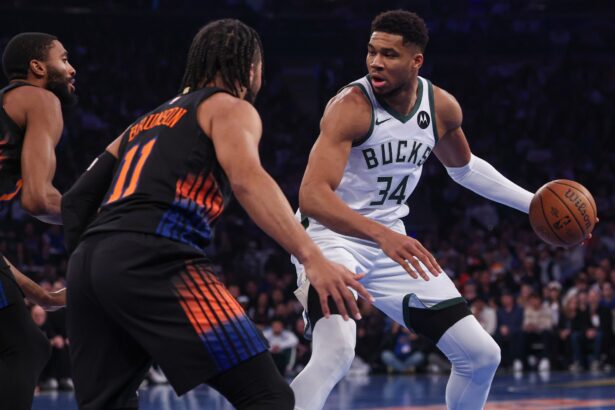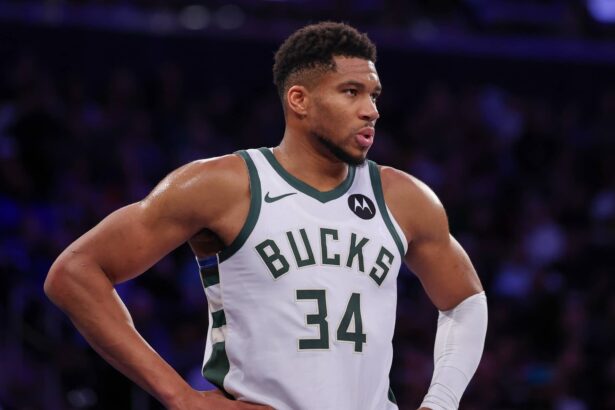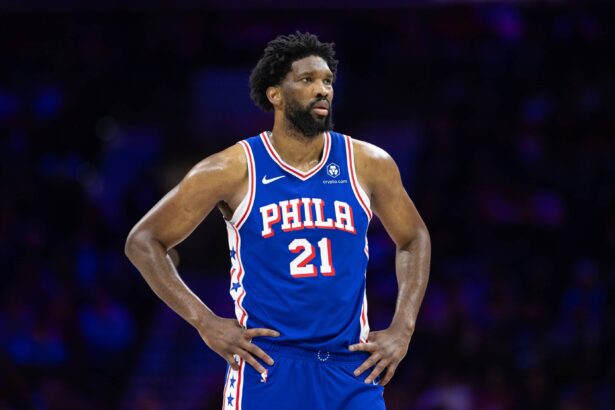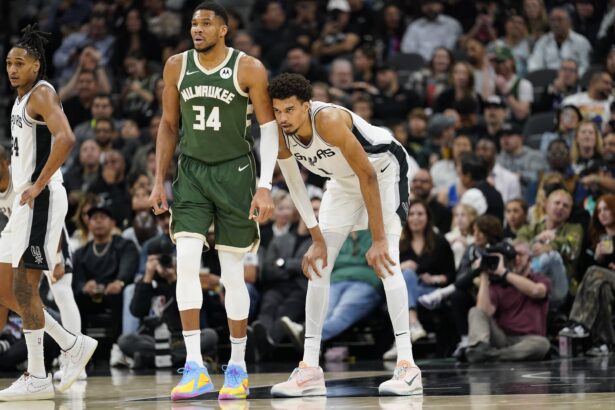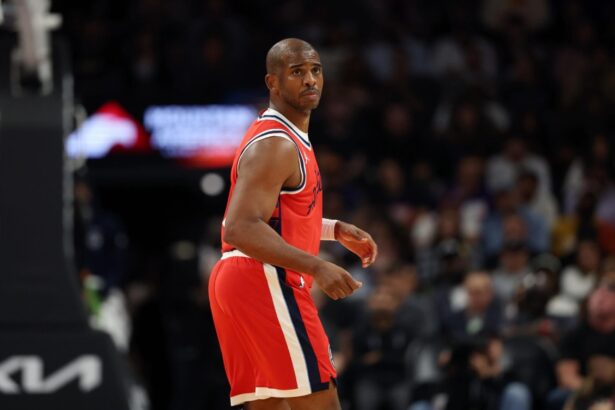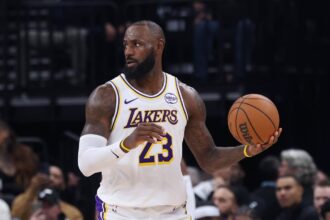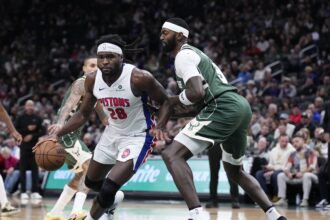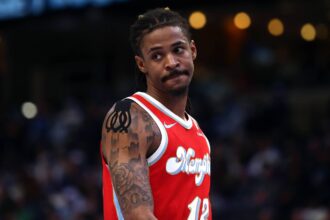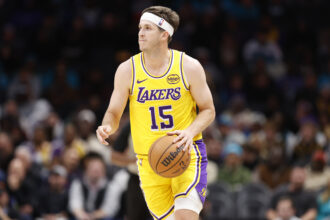- An age of 38 years old is considered very old in NBA standards
- LeBron James has completed 20 seasons at a superstar level
- Michael Jordan’s final seasons in the NBA are often ignored when discussing his legacy
LeBron James and Michael Jordan stand as towering giants, each leaving an indelible mark on the sport during their respective eras. LeBron, often hailed as the modern-day face of the NBA, has continued to dazzle fans with his remarkable athleticism, basketball IQ, and versatility with 20 seasons completed. Most recently, James managed to get through the 2022-23 season as one of the top 10 players in the world at 38 years old.
On the other hand, Michael Jordan, widely regarded as the greatest player of all time, left an enduring legacy of excellence during his heyday with the Chicago Bulls but also was a part of the Washington Wizards at the ages of 38 and 39. As both players reached the age of 38, basketball aficionados couldn’t help but wonder how their statistics compared at this stage of their illustrious careers.
Did LeBron manage to maintain his dominance well into his late 30s to surpass Jordan’s final run in the league after his second retirement? Were there significant differences in their playing styles, strengths, and contributions on the court? This article aims to delve into the intriguing statistical comparison between 38-year-old LeBron James and 38-year-old Michael Jordan, shedding light on the enduring greatness of two basketball legends separated by a generation.
Points
1. LeBron James – 28.9
2. Michael Jordan – 22.9
In the 2022-23 season, at the age of 38, LeBron James averaged an impressive 28.9 points per game, a testament to his enduring ability to put up big numbers on the scoreboard. This remarkable scoring output at an advanced age showcases LeBron’s incredible skill set, work ethic, and adaptability, as he continued to be a primary offensive force for the Los Angeles Lakers despite the presence of Anthony Davis and to a lesser extent, Austin Reaves.
In comparison, at the same age, Michael Jordan averaged 22.9 points per game. While this figure is lower than LeBron’s, it is important to note that Jordan had temporarily retired from the NBA between the ages of 35 and 38 before making a comeback. His ability to return to the league and still average nearly 23 points per game is a testament to his legendary scoring ability and basketball IQ. It’s also worth considering the differences in playing eras, defensive schemes, and the overall style of play between the two players’ respective careers, which can impact scoring statistics.
Still, James has the advantage when it comes to pure scoring statistics and Jordan was not a top-10 player in the world at 38 years old when it came to the offensive side of things. The advantage goes to The 38-year-old King.
Rebounds
1. LeBron James – 8.3
2. Michael Jordan – 5.7
LeBron James averaged 8.3 rebounds per game at the age of 38. This figure underscores LeBron’s versatility as a player, as he not only excelled in scoring but also made a significant impact on the boards. His ability to grab rebounds, especially on the defensive end, allowed him to initiate fast breaks and provide his team with additional scoring opportunities even when he was older.
While Jordan was known primarily for his scoring ability, he was also a solid rebounder for a guard. His rebounding average at 38 is a testament to his competitiveness and willingness to contribute in various facets of the game, even as he aged. No doubt, LeBron’s higher rebounding average at this stage of their careers can be attributed to his size and athleticism, which allowed him to play a more versatile role on the court, including playing as a power forward.
On the other hand, Jordan’s rebounding figures, while slightly lower, still reflect his all-around basketball skills and his commitment to making a positive impact on the game beyond just scoring. In summary, LeBron James had an edge in rebounding statistics at the age of 38, highlighting his versatility as a player deep into his 30s.
Assists
1. LeBron James – 6.8
2. Michael Jordan – 5.2
LeBron’s incredible assist average underlines his exceptional playmaking skills and his ability to act as a floor general for a title-contending team. Throughout his career, LeBron has been known for his vision, basketball IQ, and passing ability, and these qualities continued to shine as he aged. His high assist average indicates that he not only remained a scoring threat but also continued to set up his teammates effectively.
Jordan, at the same age, averaged 5.2 assists per game. While Jordan was primarily renowned for his scoring ability, he also demonstrated his capability to distribute the ball thanks to his basketball IQ. Even when he retired and came back, Jordan had an elite basketball IQ and did not need to get his reps in before posting solid playmaking numbers.
James led the NBA in assists per game three seasons ago which means The King’s basketball IQ is only getting higher as the years go by. Michael will never be considered on the same level as James when it comes to being a playmaker and no surprise, the Lakers star has the advantage in this category.
Steals
1. Michael Jordan – 1.4
2. LeBron James – 0.9
Steals are a crucial defensive statistic in basketball, reflecting a player’s ability to disrupt the opponent’s offense and create turnovers. Even when he was clearly past his prime, Jordan averaged 1.4 steals per game at the age of 38. Jordan’s defensive prowess was well-documented throughout his career, and even in his late 30s, he continued to showcase his ability to read passing lanes, anticipate plays, and come up with steals. The former Defensive Player of the Year never really lost his defensive skills.
James, at the same age, averaged 0.9 steals per game. While LeBron is known for his versatility and ability to contribute on both ends of the floor, his steal average at 38 was slightly lower than Jordan’s. However, it’s important to note that steals are just one facet of a player’s defensive contributions, and LeBron’s defensive impact extended beyond just stealing the ball, including his ability to defend multiple positions and make timely defensive plays.
There is nobody that will place James over Jordan as an all-time great defensive player and if the Defensive Player of the Year trophy doesn’t prove that, this category might.
Blocks
1. LeBron James – 0.6
2. Michael Jordan – 0.4
While LeBron is primarily known for his versatility and ability to impact various aspects of the game, including playmaking and scoring, his ability to contribute with blocks, even as he aged, showcases his well-rounded defensive skills. His 0.6 blocks per game indicate that he continued to be a defensive presence in terms of shot-blocking because at 6’9’, James is a force by nature in the modern NBA.
Jordan, at the same age, averaged 0.4 blocks per game. Jordan, a shooting guard by position, was not primarily known for shot-blocking, but he still managed to contribute with a modest average in this category. His 0.4 blocks per game suggest that he was capable of contesting shots and providing some rim protection when needed.
LeBron’s slightly higher block average at the age of 38 highlights his versatility as a player and his ability to make an impact on both ends of the floor, including rim protection. Michael Jordan, while not known for shot-blocking, still made a modest contribution in this area but lost this category.
Turnovers
1. Michael Jordan – 2.7
2. LeBron James – 3.2
The greatest scorer of all-time averaged 2.7 turnovers per game at the age of 38. This figure indicates that even in his late 30s, Michael Jordan maintained a high level of ball security, demonstrating his excellent decision-making and ability to protect the basketball. While Jordan posted fewer assists than James, he posted fewer turnovers as well.
Due to the heavy load The King had to carry with the title-contending Lakers in 2023, LeBron’s statistic suggests that he had a slightly higher turnover rate compared to Michael Jordan at that stage of their careers. In this aspect of the game, Michael Jordan had the advantage in terms of lower turnover numbers, showcasing his experience and ability to maintain possession while still being a productive offensive player.
Shooting Percentages
1. LeBron James – 50.0% FG, 32.1% 3-PT FG, 76.8% FT
2. Michael Jordan – 41.6% FG, 18.9% 3-PT FG, 79.0% FT
LeBron James had a clear advantage in shooting percentages at the age of 38, showcasing his efficiency as a scorer. LeBron’s 50.0% FG% indicates that he was very effective in making his two-point field goals, showcasing his ability to finish at the rim and make mid-range shots. While LeBron’s 32.1% 3-PT FG% is respectable, it’s important to note that three-point shooting was not a central part of his game, and his value often came from other areas, such as driving to the basket and playmaking.
On the other hand, Michael Jordan had lower shooting percentages, particularly in field goal and three-point shooting, at the age of 38. His strengths had always been mid-range shooting and scoring in the paint, which contributed to his overall field goal percentage. While his three-point and free-throw percentages were not as high as LeBron’s, Jordan’s scoring ability, even in his late 30s, remained impressive but he was never confused with being an efficiency king like he used to be in his prime when he was averaging over 30 points per game on 50% shooting.
In summary, LeBron James had better shooting percentages across the board at the age of 38, highlighting his efficiency as a scorer even if Jordan shot a higher free-throw percentage. Michael Jordan, although not matching LeBron’s percentages, continued to display his scoring prowess, particularly in areas where he had historically excelled.
Player Efficiency Rating
1. LeBron James – 23.9
2. Michael Jordan – 20.7
With an all-time ranking of career PER of 27.22 which ranks third all-time. LeBron James had a PER of 23.9 at the age of 38 this past season. This high PER indicates that LeBron continued to be an extremely productive and efficient player at an advanced age. His well-rounded game, which included scoring, playmaking, rebounding, and defense, contributed to his high PER.
Meanwhile, the career leader in PER (27.91), Michael Jordan only managed a PER of 20.7 at the age of 38. While his PER was above the league average, it was lower than LeBron’s at the same age. Jordan’s PER reflects his enduring impact on the court, even in his late 30s, with his scoring and defensive prowess being key factors in this calculation.
LeBron James had a higher PER at the age of 38, indicating that he was more statistically productive and efficient overall compared to Michael Jordan at the same age. No surprise, this statistic underscores LeBron’s versatility and continued excellence as a basketball player as he has aged.
Final Result
LeBron James vs. Michael Jordan 6-2
In the intriguing statistical comparison between 38-year-old LeBron James and 38-year-old Michael Jordan, we’ve seen a compelling snapshot of two basketball legends who were competing in the NBA at the ripe age of 38 years old. While both players demonstrated remarkable skill and tenacity, the statistical analysis provided us with a clear winner in this matchup.
LeBron James emerged as the victor in this comparison, with a final result of 6-2 in his favor. LeBron showcased his versatility, adaptability, and continued dominance on the court at the age of 38. His superior statistics in points, rebounds, assists, steals, shooting percentages, and Player Efficiency Rating highlight his ability to impact virtually every facet of the game.
There is no doubt that James is the greatest player ever when it comes to longevity as he has managed to be better at 38 years old than Michael Jordan but also better than iconic center Kareem Abdul-Jabbar who completed 20 seasons in the league.
Meanwhile, Michael Jordan, a basketball icon in his own right, displayed impressive statistics at the same age but fell slightly short in most categories when compared to LeBron. Jordan’s legacy is unquestioned, and his scoring ability and competitiveness remain legendary in the all-time rankings.
Ultimately, this statistical comparison serves as a testament to the enduring greatness of both LeBron James and Michael Jordan. It illustrates that while Jordan blazed a trail of excellence in his prime, LeBron has carried the torch into the modern NBA, cementing his place among the all-time greats and proving that no player has been good for as long as James.




